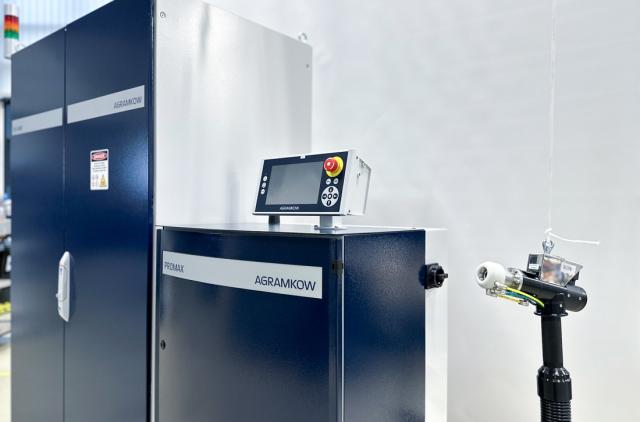
AGRAMKOW Celebrates Asger Gramkow’s 90th Birthday
On September 30th, Asger Gramkow, the founder of AGRAMKOW, turned 90 years old
The EU Parliament tightens the grip on F-gas emissions.

Last week, the EU Parliament and Council reached a provisional deal on faster phase-out of fluorinated gases (F-gases). The deal includes stricter phase-out dates in sectors where it is technologically and economically feasible to switch to alternatives refrigerants such as the refrigeration, air conditioning and heat pump sectors.
This requires faster action plan for manufacturers to transform to environmentally friendly refrigerants and upgrade production facilities to safely handle flammable refrigerants that will replace the F-gases.
“We are determined to support manufacturers in transforming quickly to more environmentally friendly refrigerants. We have already taken the pioneering role to simplify the transformation with a solution for safe refrigerant charging, that is fast and easy to install to any production area.”
Said Søren Nielsen, CEO of AGRAMKOW
Fluorinated gases or F-gases are man-made gases used as refrigerants in refrigerators, air conditions and heat pumps. Thes gases have high Global Warming Potentials (GWP), some of up to 25000 times higher than CO2, and can persist in the atmosphere for thousands of years. The three main types of F-gases are Perfluorocarbons (PFCs), Sulphur hexafluoride (SF6) and Hydrofluorocarbons (HFCs) that are commonly used in the cooling industry. Thes gases have been on the list in the Montreal Protocol, of controlled substances, and to steadily reduce their production and consumption with a 'phase-down' schedule.
Replacing F-gases are for example hydrocarbons such as R600a and R290 refrigerants that are environmentally friendly and do not contain chemical agents that emit greenhouse gases into the atmosphere. R600a and R290 are flammable but their flammability is very well covered by safety standards and with proper handling, hydrocarbons have proven to be a safe and better alternative to the F-gas refrigerants.
The current F-gas regulation that entered into force in 2015 introduces a ban on F-gases with high climate impact and includes a phase-down schedule to gradually reduce the supply of HFCs in the EU by 2030. An assessment conducted that the current regulations have led to significant reduction in the supply of emission of F-gases resulting in additional environmental improvements without having a negative effect on the overall economy. There were, however, some areas where the regulation had performed less well, and it was evaluated that more ambitious action is required, and the regulation needed to undergo multiple adaptations to fully comply with the Montreal protocol.
Therefore, additional options were proposed, one of them being further emission reduction, for example by banning products and equipment containing F-gases with high GWP. These include air conditions, heat pumps, domestic and commercial refrigerators, freezers, and other refrigeration equipment containing these gases. A prohibitions schedule for placing these products on the market has already been set and introduction of penalties proposal in case products were to be placed on the market unlawfully.
Manufacturers are at a crossroads and those affected by the new regulation need to act fast to adapt their product designs, safety protocols, and production facilities. The transformation to natural refrigerants is a necessary step to fight climate change, and it requires innovation, investment, and education. AGRAMKOW can help manufacturers on this path to sustainability and help shape the future of cooling technology.
Environmental sustainability has long been a fundamental goal for AGRAMKOW, and our product portfolio is centered on enhancing sustainability, optimizing manufacturing efficiency, and elevating quality. As part of our dedication to greener future, we have developed innovative solutions that address the challenges associated with refrigerant handling, such as leak detection, reclaiming, recycling and refrigerant charging.
Our NO-ZONE Charging Solution is just one piece of the puzzle, we believe it is the perfect fit for manufacturers that want to transform quickly, safely, and easily to flammable refrigerants.
The solution is basically a plug-and-play solution that dramatically reduce complexity and, consequently, installation costs by simply removing the need for an expensive safety zone around the charging area. Manufacturers can place it anywhere in their production without any excessive investment such as rebuild or complex ventilation installation. The solution has been designed according to EU and US safety directives and with the integrated safety system, it is perfectly safe for employees to charge with flammable A2L and A3 refrigerants.
